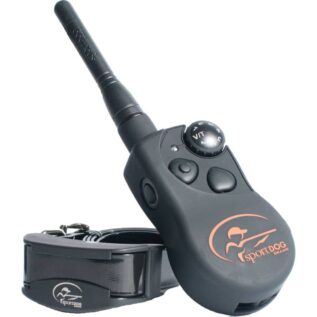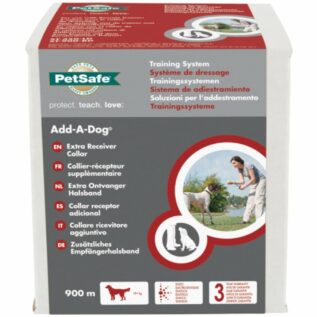How to Choose a Dog Training Collar
Introduction
Choosing the right dog training collar can be a daunting task, especially with the wide variety of options available in the market. A well-fitted and appropriate collar can make a significant difference in the training process, ensuring that your dog learns quickly and effectively. In this article, we will discuss the different types of dog training collars, the factors to consider when choosing one, common mistakes to avoid, and answer some frequently asked questions.
Types of Dog Training Collars
Martingale Collars
Martingale collars are designed to tighten slightly when your dog pulls on the leash, applying pressure without choking. They are especially useful for dogs with narrow heads or those that tend to slip out of traditional collars.
Head Collars
Head collars, also known as gentle leaders, control the dog's head and muzzle, which helps in managing pulling and lunging behaviors. They are a great option for strong or large dogs that need more guidance during training.
Prong or Pinch Collars
Prong collars consist of interlocking links with blunt prongs that tighten around the dog's neck when they pull. While they can be effective for training stubborn or strong dogs, they should be used with caution and under the guidance of a professional trainer.
Slip Collars
Slip collars, also known as choke chains, tighten around the dog's neck when they pull on the leash. They can be useful for training, but should only be used by experienced handlers, as they can cause injury if used improperly.
Static Stimulation Collars
Static stimulation collars, or static collars, deliver a mild static shock to the dog when the handler presses a button on a remote control. They can be an effective training tool when used correctly, but should only be used by experienced trainers and with a thorough understanding of your dog's temperament.
Factors to Consider When Choosing a Dog Training Collar
Size and Breed of Your Dog
The size and breed of your dog play a crucial role in determining the right training collar. Make sure to measure your dog's neck and refer to the manufacturer's size chart to ensure a proper fit.
Purpose of the Collar
Consider the specific training goals you have for your dog, such as obedience training, behavior modification, or off-leash control, and choose a collar that best suits those needs.
Material and Durability
Look for a collar made from high-quality materials that can withstand daily use and resist wear and tear. Nylon, leather, and metal are common materials used in dog training collars.
Adjustability and Comfort
Choose a collar with an adjustable fit to accommodate your dog's growth or changes in weight. Also, consider the comfort of the collar, opting for one with padding or rounded edges to prevent irritation.
Safety Features
Select a collar with safety features such as quick-release buckles, reflective materials, or breakaway mechanisms to reduce the risk of injury or accidents.
Common Mistakes to Avoid When Choosing a Dog Training Collar
Choosing a collar based on aesthetics alone: While it's natural to want a stylish collar for your dog, prioritize functionality and safety above appearance.
- Ignoring your dog's temperament: Consider your dog's individual personality and behavior patterns when selecting a training collar. Some dogs may respond better to certain types of collars, while others may require a more gentle approach.
- Skipping professional guidance: If you're unsure about the right collar for your dog or how to use it effectively, consult a professional dog trainer for advice.
- Using a training collar as a regular collar: Training collars are not meant for continuous wear. Use them only during training sessions, and switch to a regular collar when not training.
Conclusion
Choosing the right dog training collar is an essential step in establishing a successful training program for your dog. By understanding the various types of collars and considering factors such as size, breed, purpose, and safety, you can select the best collar for your dog's unique needs. Remember to consult with a professional trainer if you're unsure about which collar to choose or how to use it effectively.
Frequently Asked Questions
Can I use a dog training collar for a puppy?
It depends on the type of collar and the age of the puppy. Generally, it's best to wait until your puppy is at least 5-6 months old before introducing a training collar. Consult with a professional trainer for guidance on the most appropriate collar and training techniques for your puppy.
How long should a dog wear a training collar?
A dog should only wear a training collar during training sessions, typically lasting no more than an hour. Remove the training collar after the session and replace it with a regular collar.
How do I clean and maintain a dog training collar?
The cleaning method depends on the material of the collar. Nylon collars can usually be hand-washed with mild soap and water, while leather collars require special leather cleaners and conditioners. Metal collars can be wiped down with a damp cloth. Always follow the manufacturer's instructions for cleaning and maintenance.
Can a dog training collar be used for multiple dogs?
While some collars may be adjustable to fit multiple dogs, it's best to have a dedicated collar for each dog. This ensures a proper fit and allows for individualized training based on each dog's unique needs.
Are electronic collars safe for dogs?
When used correctly and under the guidance of a professional trainer, electronic collars can be a safe and effective training tool. However, misuse or overuse can cause discomfort, fear, and anxiety in dogs. Always follow the manufacturer's instructions and consult a professional trainer for proper usage.


































